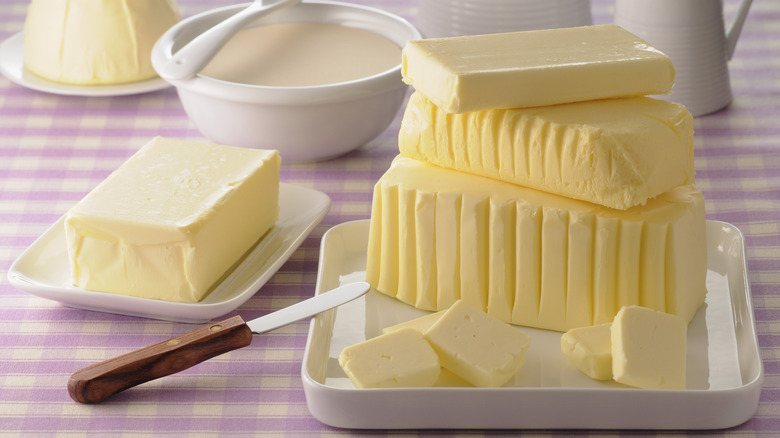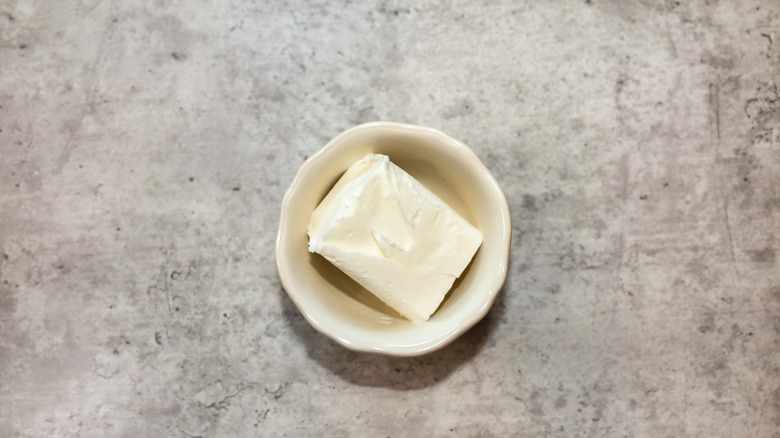Butter Vs Shortening: What's The Difference?
If you've ever baked, you know that in order to get that perfectly moist cake or savory croissant, you're going to need to use some sort of fat. There are actually a lot of options here — the savory richness of lard or bacon grease, the pure clarified punch of ghee, the likely animal-product-free margarine, the healthy lightness of coconut oil — but when it comes down to it, there are two products you're likely to lean on more than any other: butter and shortening.
So, since these two ingredients are often interchangeable, that must mean they're the same thing, right? Not at all, actually. Despite ultimately serving the same purpose, butter and shortening couldn't be more different once you get down into their base components. In fact, there is literally no overlap in ingredients between the two — which, unsurprisingly, means that even though you can swap them for each other, it's going to make a difference on how your finished product tastes.
Shortening and butter don't have a single common ingredient
So you know what butter is — we've all eaten it — but do you really know what butter is on a component level? We don't really have much cause to think about it in everyday life. At its core, in order to make butter, you just churn cream until the milk solids separate from the whey, then add salt (you can actually make butter at home this way). So reducing butter down to its constituent parts, you're left with a substance that's around 80% butterfat, 18% water, and 1-2% milk solids. Shortening contains exactly zero of these ingredients.
That's right — not only does commercially available shortening like Crisco contain no dairy, it doesn't even contain any water. Instead, it's pure oil (soybean, palm, or cottonseed) that goes through a scientific process called hydrogenation that keeps it solid at room temperature. As a result, it's actually 100% fat. And while butter is technically vegetarian, it's also a dairy product, while shortening is actually completely vegan.
Butter and shortening don't make finished products that taste the same
Now, it's important to note that — perhaps unsurprisingly — two baking components with radically different ingredient lists, even if they ultimately serve the same purpose, are going to make the end products taste slightly different. The advantage to butter is the creaminess and signature taste it can provide to a baked good; there's a reason "buttery" is an inherently positive adjective. But while shortening can't do that, it serves the same purpose as butter while providing neutrality butter lacks; it has no inherent taste, so it doesn't affect the taste of your cake one way or another.
Ultimately, whether you should use butter or shortening really depends on what you're going for. While you can use either, which one is appropriate in a given situation is something you'll have to figure out for yourself — although if you're making a baked good for vegans, it's pretty easy to determine.


